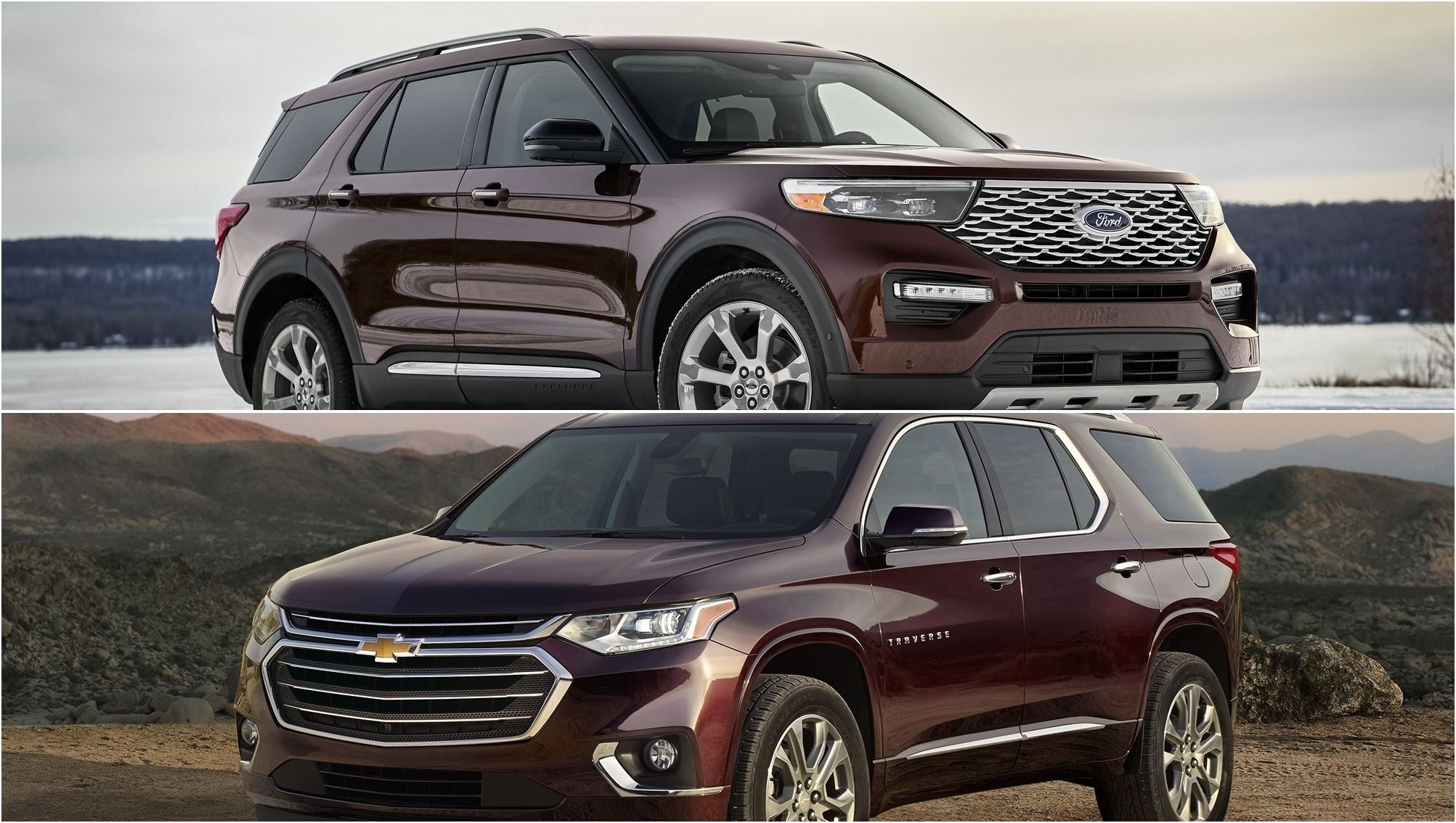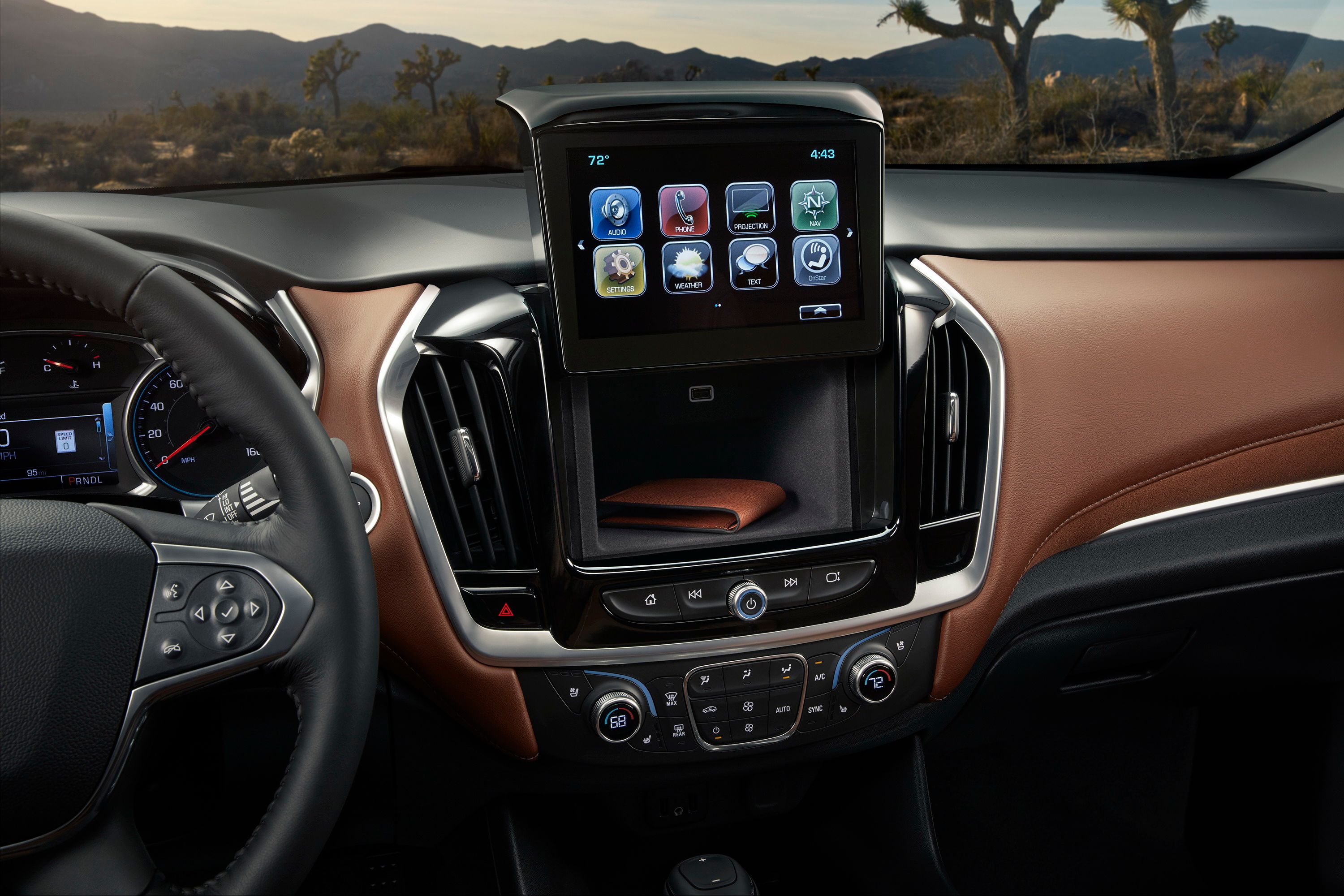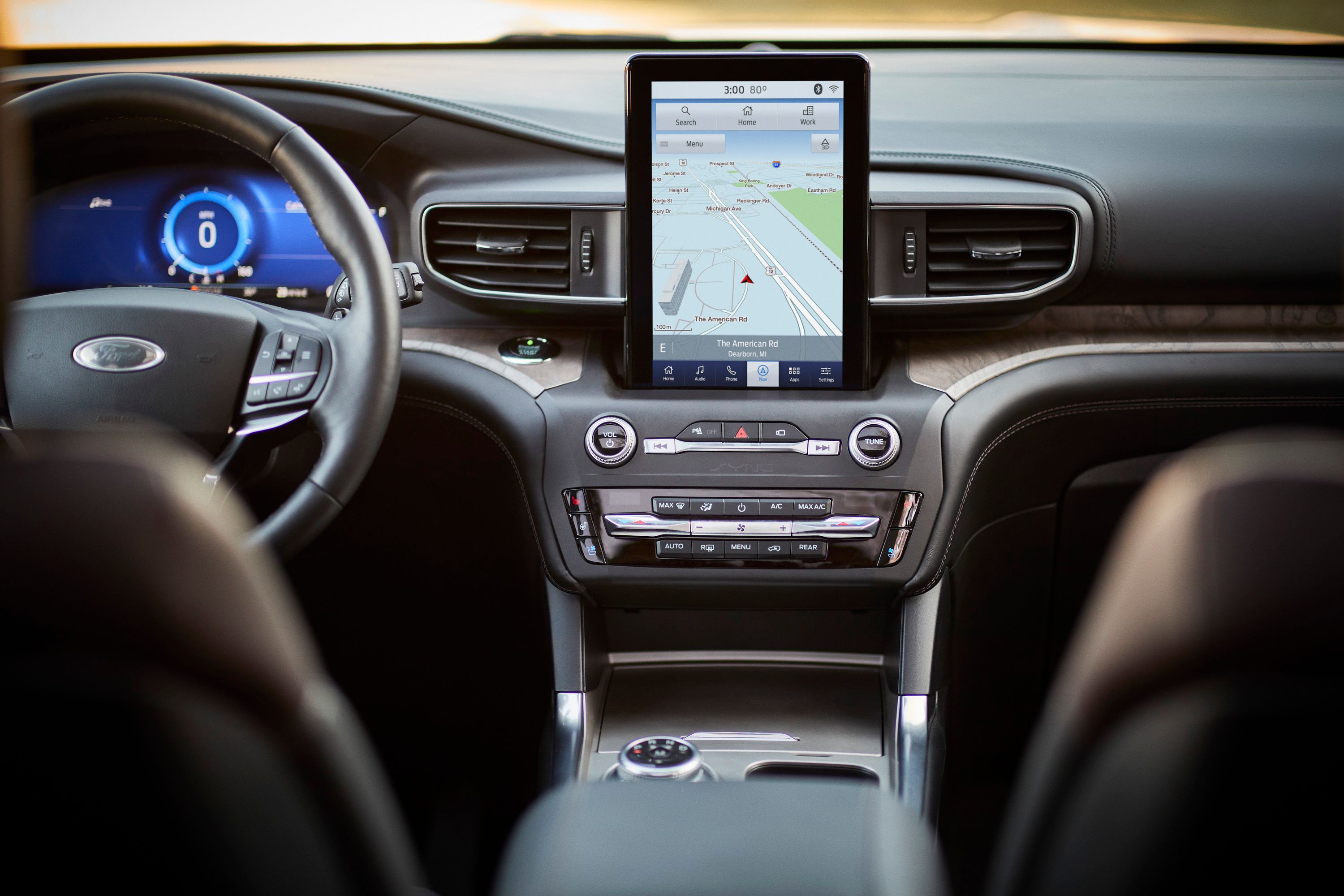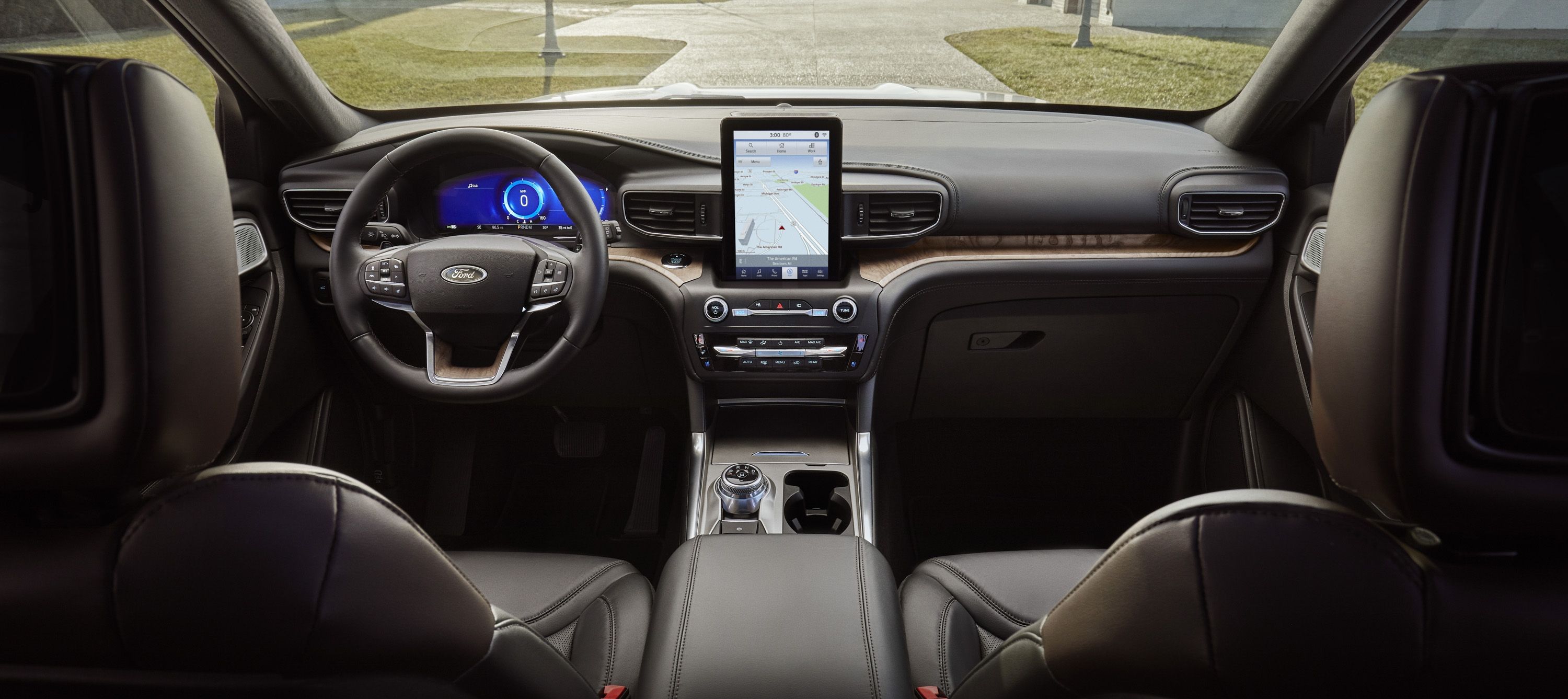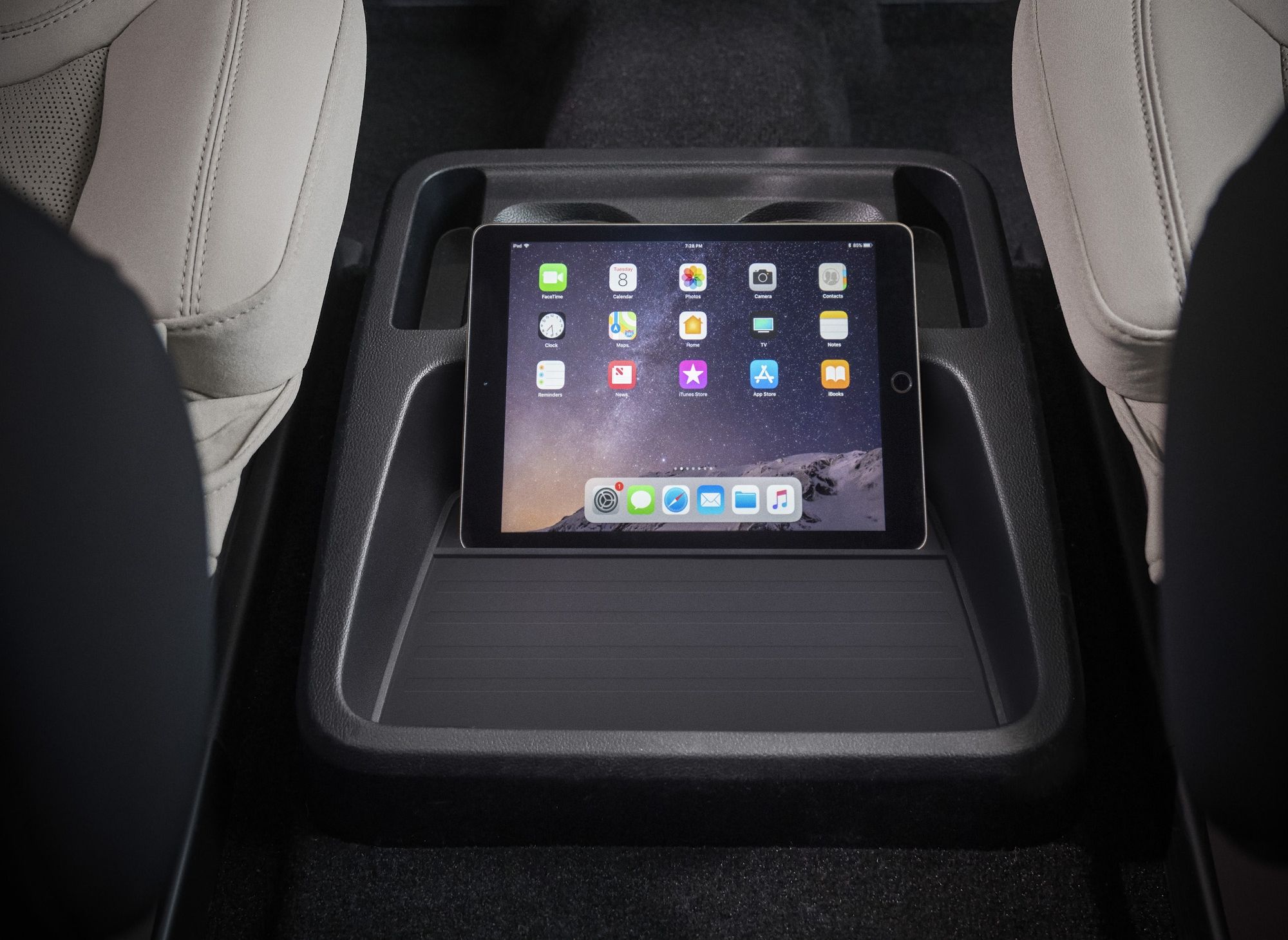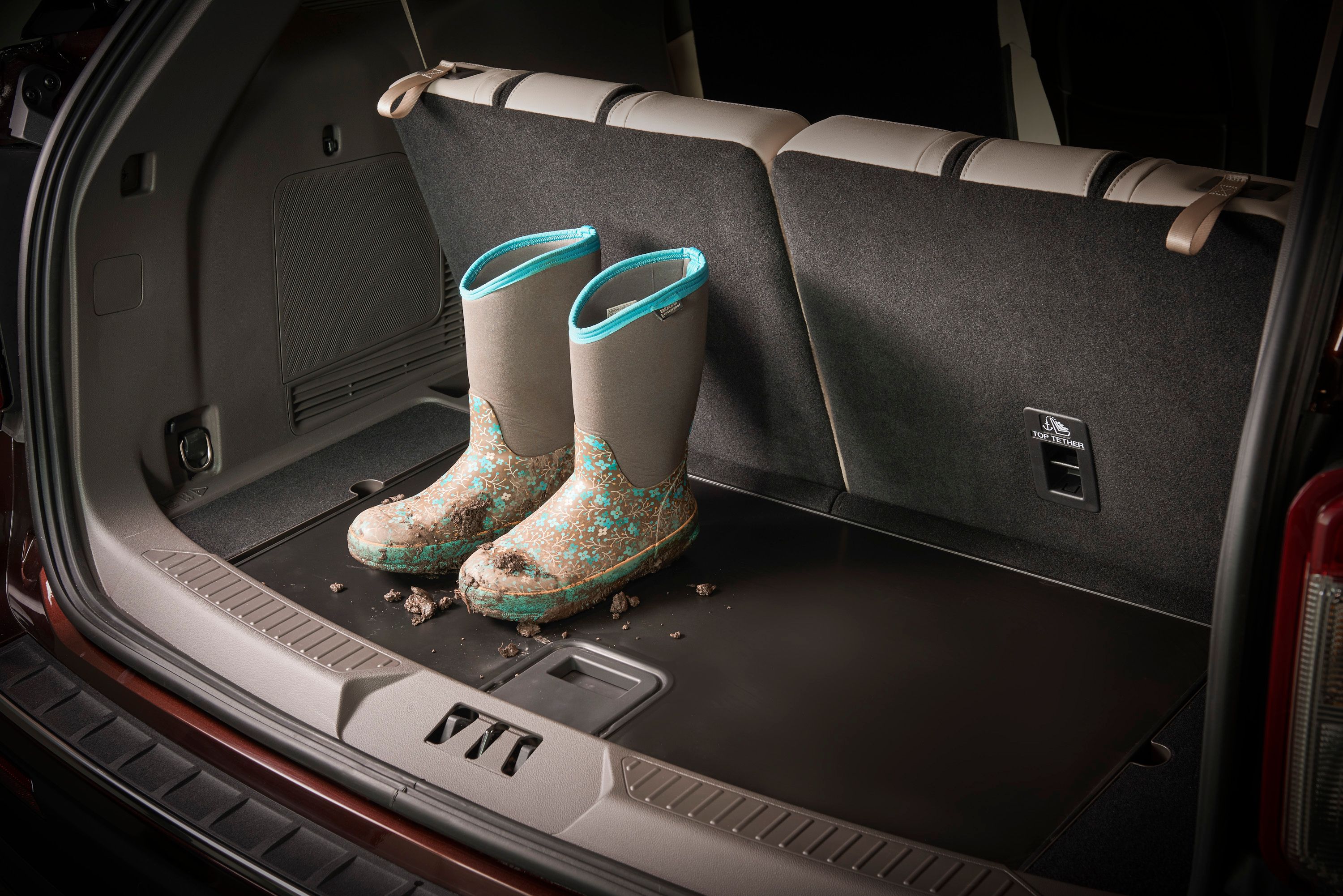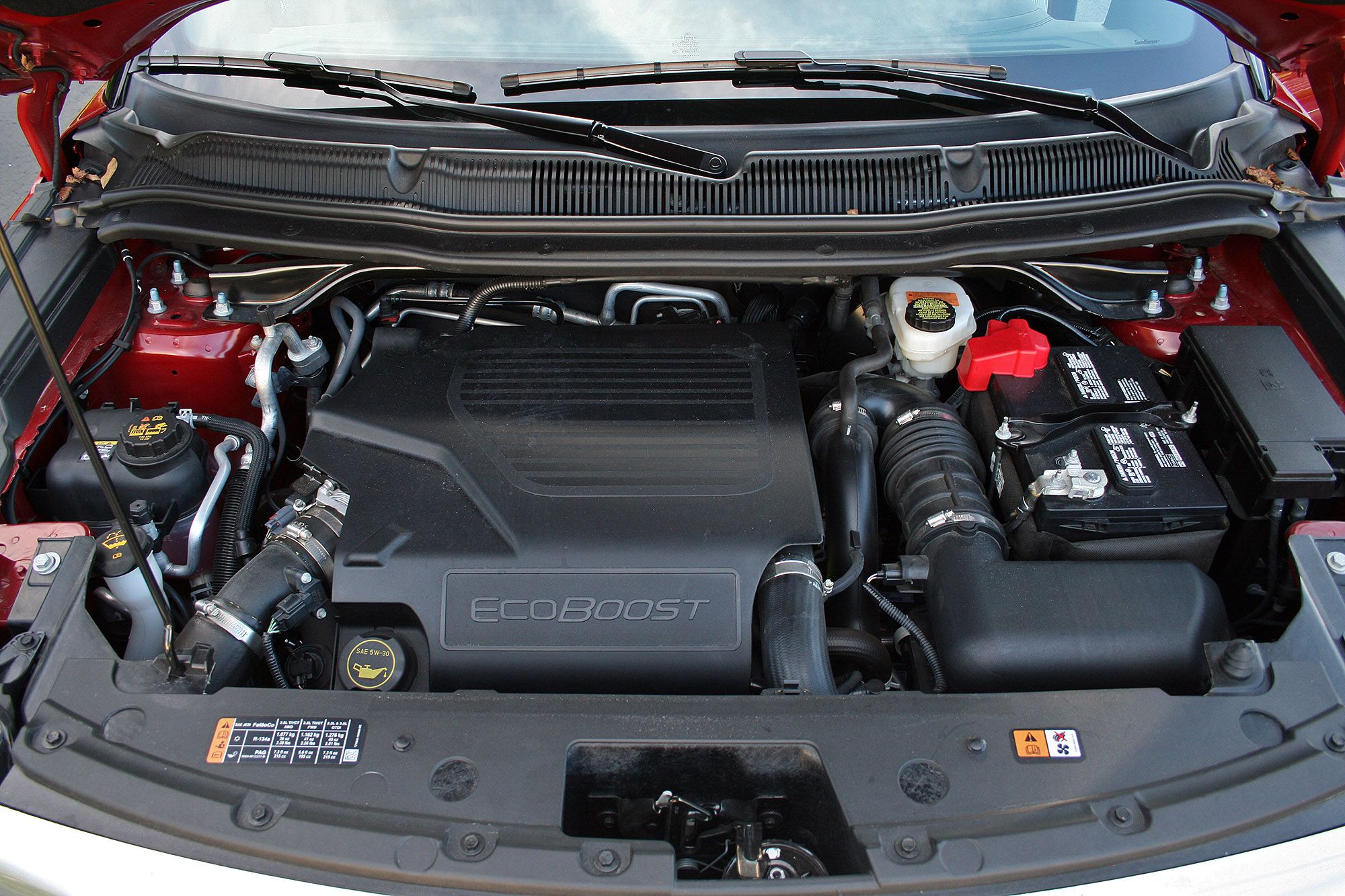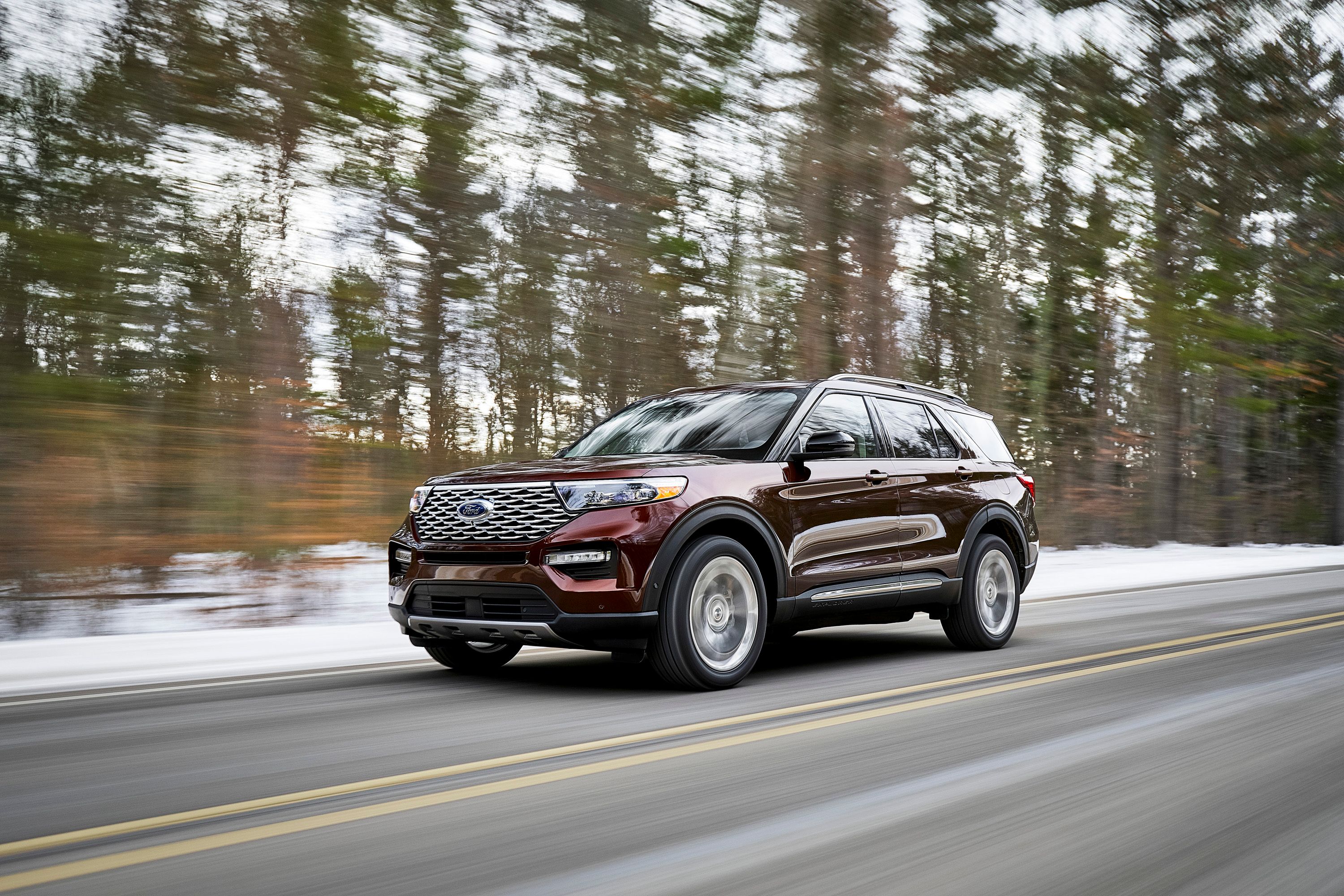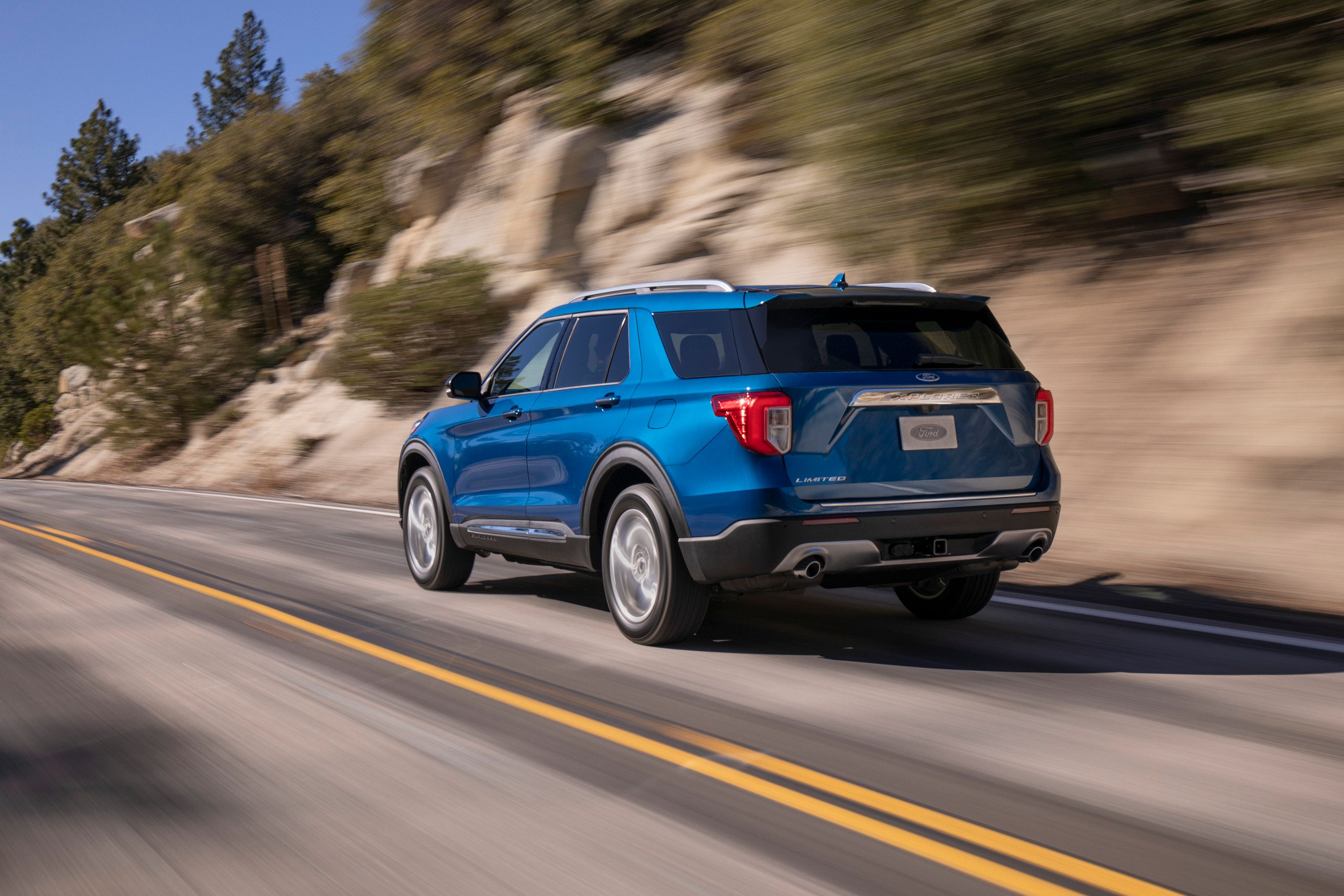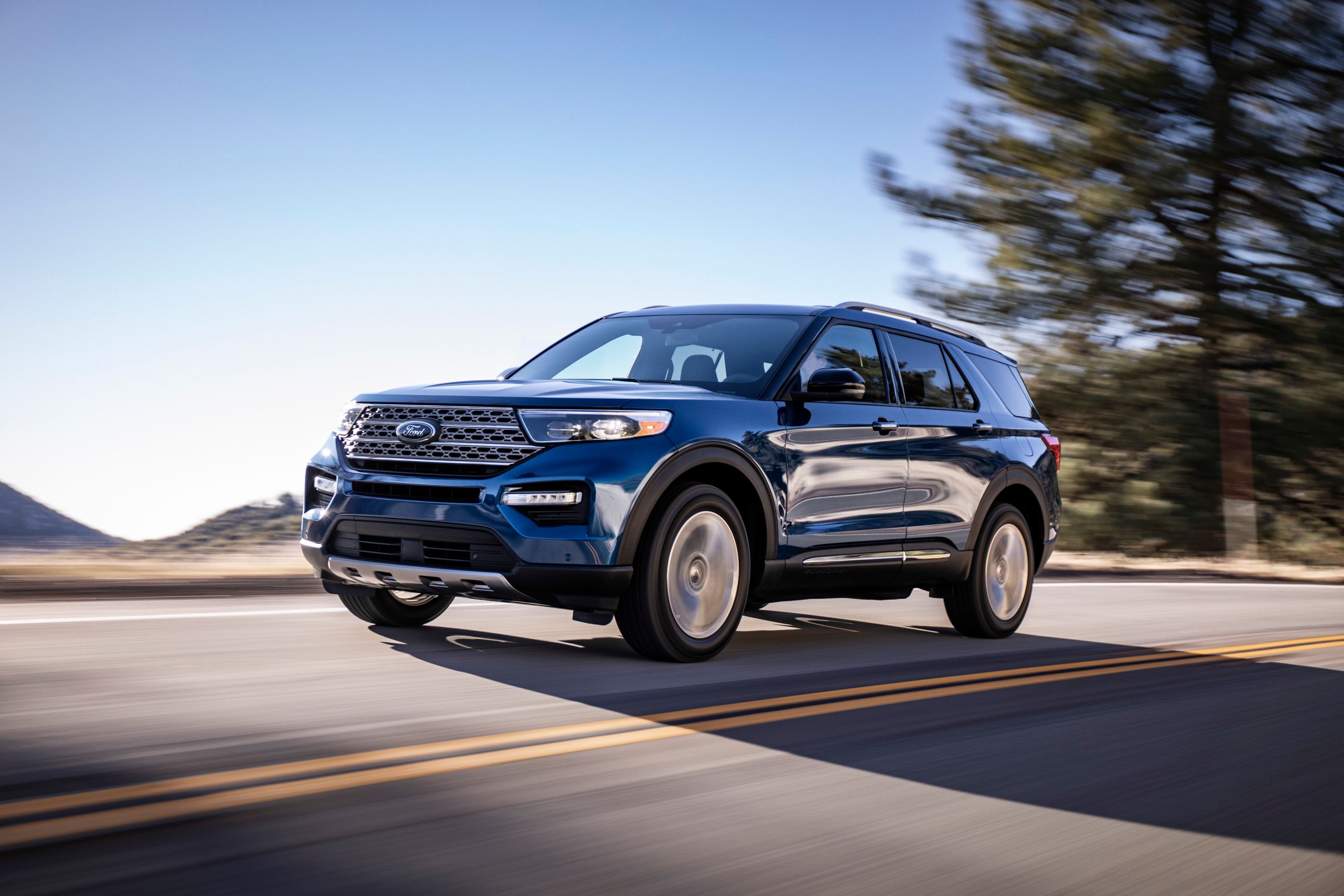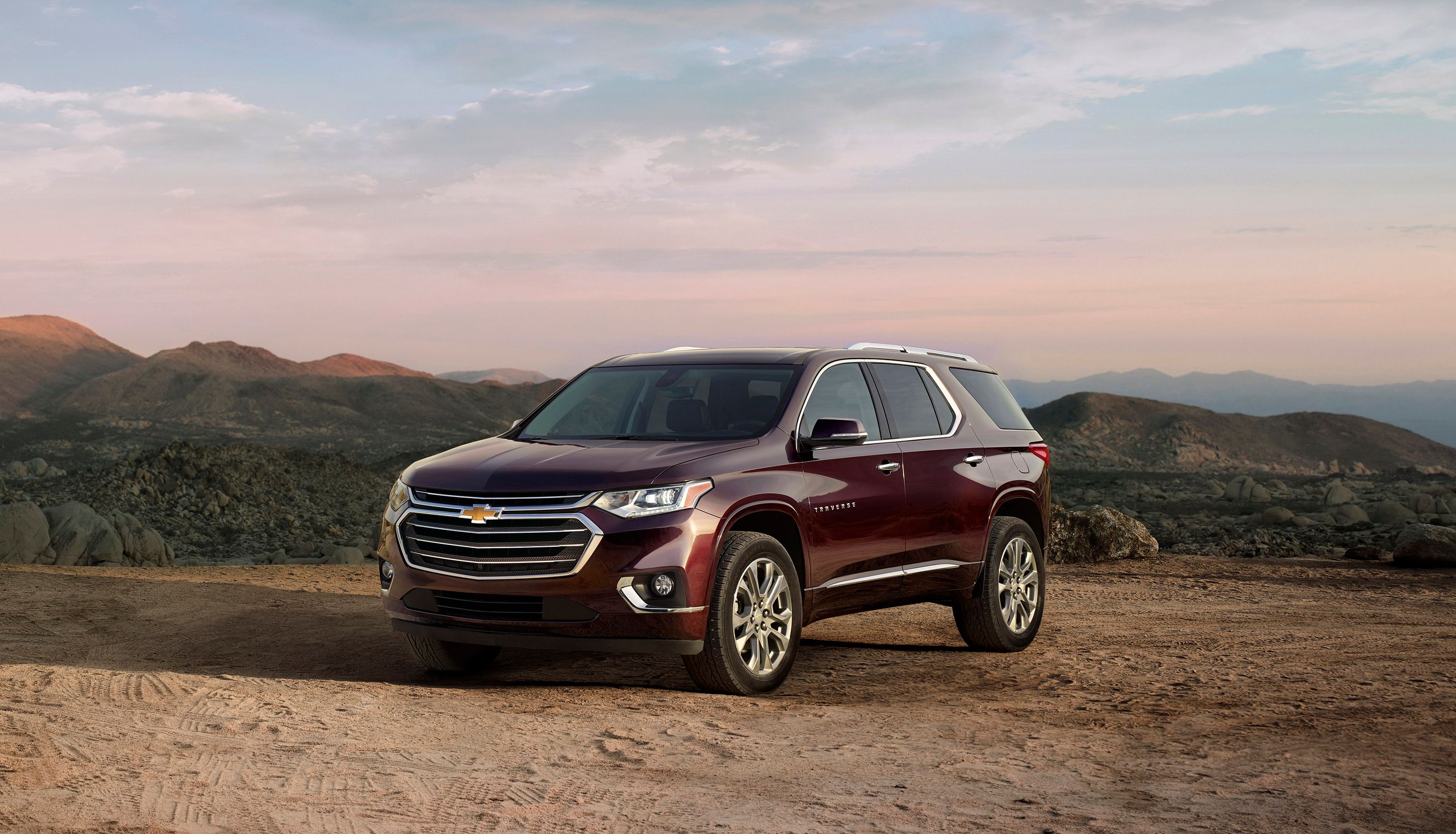The Ford Mustang vs. Chevrolet Camaro battle may be the most iconic rivalry among Detroit-based automakers, but it has fallen behind the SUV wars in recent years. Both Ford and Chevy are playing hard on the crossover market, and the midsize war just got a lot more interesting now that the Traverse has a brand-new Explorer to take on.
While the Explorer has been around since 1990, the Traverse was born rather recently, in 2008. But despite being only 11 years old as of 2019, the nameplate enjoys great success. It's not as successful as the Explorer, America's best-selling SUV, but it definitely has what it takes to give the Ford a run for its money. How do these SUVs compare? Find out in the comparison below.
Exterior
|
|
ids=818292,700701 |
no_overlay=true> |
Although they're built by different companies that are owned by different giants, the Traverse and the brand-new Explorer are actually very similar design-wise.
The redesign brought a brand-new grille on the Explorer. Not only taller, it also has a hexagonal design with the center section stretching wider than the top and the bottom frame. That's very similar to how Chevy shaped the grille of the Traverse back in 2017. The Explorer's new headlamps are also somewhat similar, as they are slimmer, wider, and set at the top of the fascia. Granted, Chevy's headlamps have sharper edges and a more complex lighting pattern, but the similarity is there.
Things change a lot below the grille though. The Explorer continues to feature C-shaped side vents and adopted slim, rectangular daytime running lights. The Traverse, on the other hand, has simpler outlets with round DRLs.
Move onto the sides and you'll notice that both SUVs feature heavily slanted C-pillars and blacked-out B-pillars. Ford claims this is an Explorer trademark, but the design also includes black A-pillars, which the Traverse doesn't have. So while the two have almost identical glasshouses, the Explorer has the more convincing floating roof effect.
|
|
ids=818293,818294 |
no_overlay=true> |
Interestingly enough, the Explorer's redesigned side sills look a lot like the Traverse, as they feature a small bulge that prevent the doors from having a perfectly straight lower cut. It even features a similar chrome strip, but the Traverse has a body-colored sill, while the Explorer's is black. Things are no longer the same between the sills and the windows though. While the Explorer has a somewhat conservative, featureless design, the Traverse has beefier fenders, so it looks sportier. The main beltline runs through the door handles on the Explorer and above them on the Traverse, yet another feature that makes the Chevy look more athletic.
In my view, the Traverse wins here.
The two SUVs look radically different around back. Sure, both have large, trapezoidal license plate recesses carved into the tailgate and sizable spoilers, but the similarities end here. While Ford retains the vertical taillights design of the previous Explorer, Chevy went with the more popular horizontal, two-piece design. A thick chrome bar runs between the taillights of the Traverse, a feature that Ford dropped for the new Explorer, opting for a smaller trim.
Yet another big difference is the way the lower tailgates are shaped. Ford went with a simple design that makes it look as if the tailgate sinks behind the fenders. Chevy took a different path with a beefed-up lower tailgate that makes it look like the Traverse has a massive, tall rear bumper. Both look cool in their own way, so it's mostly a matter of taste. The bumpers are nothing to write home about on both SUVs. A thin chrome strip and large exhaust pipes onto the sides. Sure, the quad-exhaust layout on the Explorer Platinum looks very cool and sporty.
Size-wise, the Traverse is a bit longer than the Explorer. More specifically, it's 5.5 inches longer. It also almost an inch taller, but it's marginally narrower than the Explorer. Despite this, for some strange reason, the Traverse looks more like a wagon than a proper SUV. The Chevy also features the longer wheelbase at 120.9, an extra 1.8 inches over the Ford.
|
2020 Ford Explorer |
2019 Chevrolet Traverse |
|
|
Wheelbase |
119.1 |
120.9 |
|
Length |
198.8 |
204.3 |
|
Width, excluding mirrors |
78.9 |
78.6 |
|
Height |
69.9 |
70.7 |
|
Track, front curb |
66.9 |
67.3 |
|
Track, rear curb |
66.9 |
67.0 |
Interior
Although it's not as new as the Explorer, the Traverse isn't old either, having been introduced for the 2018 model year. So it features a modern and fresh interior, although it has a more traditional design inside the cabin. The dashboard features an organic design you will find in several vehicles, with a two-tier passenger side. There's a plasticky lower section with the glove box and a more stylish upper section covered in leather on the more expensive trims.
The center stack contains a seven-inch infotainment system -- it grows to eight inches in the more expensive trims -- flanked by large, vertical A/C vents. The display is backed by two control panels place below. Like any SUV, it features a wide center stack and an equally wide armrest between the front seats. You can pick between a cool selection of upholstery materials and color, but you need to go with a more expensive trim for the good stuff.
The base L model comes with a seven-inch infotainment system, tri-zone climate control, a humidity sensor, front bucket seats, an eight-seat configuration, manual tilt and telescoping steering column, steering wheel-mounted controls, tire pressure monitoring, and the Teen Driver function. Opt for the mid-range LT trim and you also get a leather-wrapped steering wheel, and power windows. The Premier trim adds a Bose premium audio system, an eight-inch infotainment display with navigation, heated front seats, heated rear outboard seats, power tilt and telescoping steering column, and a universal garage remote.
The Explorer is just as fancy inside the cabin, but Ford took a different design approach. Unlike most carmakers, it went with a vertical, tablet-style infotainment display. The screen sits atop a center stack that extends a few inches from the rest of the dashboard to create a two-tier design that incorporates the passenger side as well. The A/C vents are small and set horizontally on each side of the display. Just like in the Traverse, there's an additional command panel above the center console, which sits a bit higher, just like in a sports car.
The infotainment screen is notably larger in the Explorer. The standard unit measures eight inches, one more than the Traverse, while the optional display comes with a 10.1-inch diagonal. That's 2.1 inches more than the unit you get in the range-topping Chevy. The instrument cluster is also bigger at 12.3 inches and features better graphics and functions. It also changes its background appearance based on the selected driving mode.
Features-wise, it seems on par with the Traverse. The low-end model comes with a solid equipment list, but you don't get too many premium features. These add up when you select the more expensive trims, while the Premium version features a standard twin-panel moonroof and leather upholstery on the seats, steering wheel, upper dashboard, door panels, and console armrest.
|
2020 Ford Explorer |
2019 Chevrolet Traverse |
|
|
First-row headroom |
40.7 |
41.3 |
|
First-row legroom |
43.0 |
41.0 |
|
First-row shoulder room |
61.8 |
62.1 |
|
First-row hip room |
59.2 |
58.1 |
|
Second-row headroom |
40.5 |
40.0 |
|
Second-row legroom |
39.0 |
38.4 |
|
Second-row shoulder room |
61.9 |
62.2 |
|
Second-row hip room |
59.1 |
56.9 |
|
Third-row headroom |
38.9 |
38.2 |
|
Third-row legroom |
32.2 |
33.5 |
|
Third-row shoulder room |
54.6 |
57.5 |
|
Third-row hip room |
40.9 |
48.5 |
Technology
Tech-wise, the Traverse features some of Chevy's latest bits, starting with the MyLink infotainment system. Already proven in other vehicles, it comes with the latest apps and smartphone connectivity. Chevy offers standard features like an eight-point digital compass and 4G LTE wi-fi hotspot on the base trim. As you upgrade, you can more convenience features. The Premier is the best model to buy if you want all the goodies, as it adds navigation, a rear camera mirror, surround vision, and wireless charging.
Moving over to driver-assist and active safety features, the standard package includes Chevrolet Connected Access, a passenger sensing system, OnStar system, and a rear vision camera. The Premier trim adds Lane Change Alert with Side Blind Zone Alert, Rear Cross Traffic Alert, and Rear Park Assist. Premier is also the only trim on which you can order the optional Low Speed Forward Automatic Braking, Lane Keep Assist with Lane Departure Warning, Front Pedestrian Warning, Forward Collision Alert, and Following Distance Indicator. Needless to say, it's a bit disappointing that you can't have these options on other trims.
Finally, there's the luxury High Country trim that features all of the options above as standard, but this SUV is really expensive, fetching almost $55,000.
We're still waiting for final specs on the brand-new Explorer, but we already know that it comes with the Co-Pilot360 package of driver-assist features standard. The bundle includes Blind Spot Information System with cross-traffic alert, Lane-Keeping System, hill start assist, rearview camera with built-in lens washer, auto headlamps with auto high-beams, Pre-Collision Assist with automatic emergency braking and Pedestrian Detection, forward collision warning and dynamic brake support, and post-impact braking.
You can upgrade to the Ford Co-Pilot360 Assist+ package and get everything above plus adaptive cruise control with stop-and-go and lane-centering, speed sign recognition, evasive steering assist, voice-activated touch screen navigation with pinch-to-zoom capability, and SiriusXM Traffic and Travel Link. The options list for this SUV also includes Active Park Assist 2.0, reverse brake assist, 360-degree camera with front split view, adaptive cruise control with speed sign recognition, hill descent control, and Blind Spot Information System with trailer tow coverage.
Passenger Space and Luggage Room
Passenger Space is very important for family vehicles, much more so when we are talking about three-row SUVs. One thing to remember here is that while the Explorer offers seating for seven people, the Traverse can seat eight, although this configuration isn't available with the more expensive trims. If that extra seat doesn't matter, let's have a look at the numbers to see which SUVs offers the most room.
When it comes to headroom, the Traverse offers a bit more space in the first row, but the difference is marginal at 41.3 versus 40.7 inches. The Explorer wins in the second and third rows, but not by much. You get an extra half-inch in the second row and an extra 0.7 inches in the third row at 40.5 and 38.9 inches, respectively.
Moving over to shoulder room, the Chevy wins in all three department. But again, not by much, at least in the first and second rows, where the difference is at 0.3 inches. But it offers an extra 2.9 inches of room in the third row at 57.5 inches. Things are different in the hip room department. The Explorer offers an extra 1.1 inches in the front row and an additional 2.2 inches in the second row. On the flipside, the Traverse boasts an extra 7.6 inches of hip room in the third-row seats.
Things are similar when it comes to legroom. Up front, you get an extra two inches in the Explorer, where you can stretch for a total of 43 inches. There's a bit more room for second-row passengers as well at 39 inches, a half-inch increase over the Traverse. The latter offers a tad more room in the third row, where passengers will benefit from an extra 1.3 inches.
Needless to say, the SUVs are very similar here, as an extra inch won't make much of a difference. However, the Explorer falls behind the Traverse when it comes to cargo room. With all three rows of seats in place, the Ford can swallow up to 18.2 cubic feet. That's not bad for a midsize SUV, but the Traverse offers nearly five cubic feet more at 23. Remove the third-row seats, and the Explorer's capacity grows to 47.9 cubic feet. Do the same in the Traverse, and you can use an impressive 57.8 cubic feet. That's almost ten extra cubic feet.
A similar proportion remains in place when you fold the second-row seats. The Explorer's capacity grows to 87.8 cubic feet, while the Traverse's capacity increase to 98.2 cubic feet. That around 10 cubic feet more if you pick the Chevy. It's safe to say that we have a clear winner here.
|
2020 Ford Explorer |
2019 Chevrolet Traverse |
|
|
Total passenger volume |
152.7 cu. ft. |
157.3 cu. ft. |
|
Cargo volume behind first row |
87.8 cu. ft. |
98.2 cu. ft. |
|
Cargo volume behind second row |
47.9 cu. ft. |
58.1 cu. ft. |
|
Cargo volume behind third row |
18.2 cu. ft. |
23.0 cu. ft. |
Drivetrain and Performance
The Chevy Traverse is available with two engines, but one of them is restricted to a certain trim. The more common unit is a 3.6-liter V-6 rated at 305 horsepower and 260 pound-feet of torque. It mates to a nine-speed automatic transmission.
The second engine is a turbocharged, 2.0-liter Ecotec four-cylinder. Although it's less powerful than the V-6 at 255 horsepower and 295 pound-feet, it's not used as a base engine. This mill is only offered with the Sport trim. It's also paired to the nine-speed automatic gearbox.
Likewise, the Explorer comes with two drivetrains. First up is an updated version of the previous 2.3-liter EcoBoost four-cylinder. Shared with the Mustang, among other Fords, it generates a cool 300 horsepower and 310 pound-feet of twist. That's notably more than Chevy's four-banger; an extra 45 horsepower and 15 pound-feet.
Ford offers its very own V-6 as well, but the old 3.5-liter was replaced by a twin-turbo, 3.0-liter mill. The V-6 delivers 365 horsepower and 380 pound-feet, which is, again, notably more than the competition. Opt for this mill and you'll benefit from an extra 60 horsepower and 80 pound-feet compared to the equivalent Transverse. On the flipside, this engine is restricted to the range-topping Platinum trim, so you'll have to buy an expensive SUV to get it. Both engines mate to Ford's recently introduced 10-speed automatic transmission.
|
Chevy Traverse V6 |
Chevy Traverse I4 |
Ford Explorer V6 |
Ford Explorer I4 |
Engine |
3.6-Liter |
2.0-Liter Ecotec |
3.0-liter EcoBoost |
2.3-Liter EcoBoost |
|
|
Horsepower |
305 @ 6,800 RPM |
255 @ 5,500 RPM |
365 @ TBA |
300 @ TBA |
|||||
|
Torque |
260 Lb-FT @ 2,800 RPM |
295 LB-FT @ 3,000 RPM |
380 LB-FT @ TBA |
310 LB-FT @ TBA |
|||||
|
Transmission |
Hyrdramatic 9T65 Nine-Speed |
Hydramatic 9T65 None-Speed |
10-Speed Auto |
10-Speed Auto |
|||||
|
Curbweight |
4,362 LBS |
4,362 LBS |
3,727 LBS |
4,345 LBS |
|||||
|
Fuel Economy |
18 City 25 HWY |
20 City 23 HWY |
TBA |
TBA |
Towing and Fuel Economy
The Traverse can tow up to 5,000 pounds when equipped with the big V-6 engine. Naturally, the four-cylinder isn't as capable. Thanks to the new upgrades, the Explorer can beat that with both of its units. While the 2.3-liter EcoBoost tows up to 5,300 pounds, the 3.0-liter V-6 will tow up to 5,600 pounds.
When it comes to fuel economy, we're still waiting for EPA estimates for the Explorer, but we already know how much the Traverse returns. The 2.0-liter four-cylinder is capable of 20 mpg in the city and 23 mpg on the highway, while the 3.6-liter V-6 returns up to 18 mpg in the city and up to 25 mpg on the highway. Ford's revised EcoBoost should match Chevy's four-banger for city ratings, but it should deliver more on the highway, around 27 mpg. The V-6 should also fare better than Chevy's old 3.6-liter unit at around 18 mpg city and up to 28 mpg highway.
Final Thoughts
This is definitely a close one, as each SUV comes with its advantages. While the Explorer has the better tech, the Traverse offers a bit more passenger room in certain areas and boasts the largest trunk. Drivetrain-wise, the Explorer has the more powerful engines and the better towing ratings across the board. The exterior design is a matter of taste, so I can't really factor this feature in. All told, it's down to what you really need. If you want an eighth seat in the back and more luggage room, the Traverse is your best option. If you're looking for the latest tech, bigger displays, and you can leave without the extra 10 cubic feet of the Traverse, you might as well go with the Explorer.
Further reading
Read our full review on the 2020 Ford Explorer.
Read our full review on the 2019 Chevrolet Traverse.

